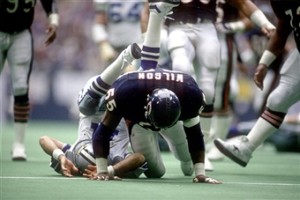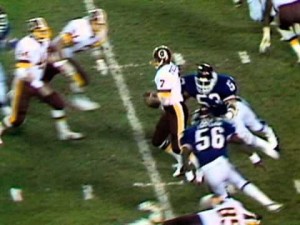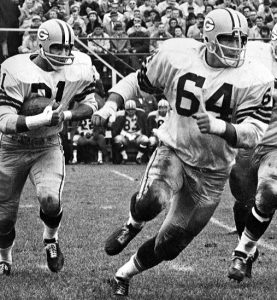Terrell Who? Today is Jerry Kramer’s Day Comments Off on Terrell Who? Today is Jerry Kramer’s Day
When we started Sports Then and Now nine years ago, one of the first things we did was create a list of former NFL players who we felt were deserving of being included in the Pro Football Hall of Fame, but up until that time had been snubbed for induction.
Number one on that list was former Green Bay Packers offensive lineman Jerry Kramer. Today, Kramer’s name can finally be removed from that list.
While one member of the Hall of Fame class of 2018 is trying to steal the attention by focusing on what he believes was a personal snub not to be a first-year inductee, in reality, his perceived snub and hardship is nothing compared to what Jerry Kramer has endured over the last half century.
When the NFL announced the 50th Anniversary All-NFL Team in 1969, Jerry Kramer was one of the two offensive guards named to the team. Yet, it took until just one year before the 100th Anniversary All-NFL Team will be announced before Kramer was selected for the Pro Football Hall of Fame.
The Green Bay Packers of the 1960s were one of the great dynasty teams in NFL history. Kramer will join 12 other members of the 1960s Packers (plus Coach Vince Lombardi) in the Hall of Fame.
Kramer retired after the 1968 season and was first listed as a Hall of Fame finalist in 1974. Initially, it seemed likely that Kramer would be inducted pretty quickly. He was a finalist seven times in an eight year stretch between 1974 and 1981 while seven of his teammates were inducted.
At that time, Kramer wasn’t the only 1960s Packer having to wait his turn for induction. In 1981, two of his former teammates, Willie Davis and Jim Ringo, were inducted in their sixth and seventh years as a finalist, respectively. Later in the decade, Paul Hornung was selected in his 12th year as a finalist in 1986 and Willie Wood in 1989 in his 10th time as a finalist.
Kramer was again a finalist in 1984 and 1987, but still had not yet received the call. Read the rest of this entry →




